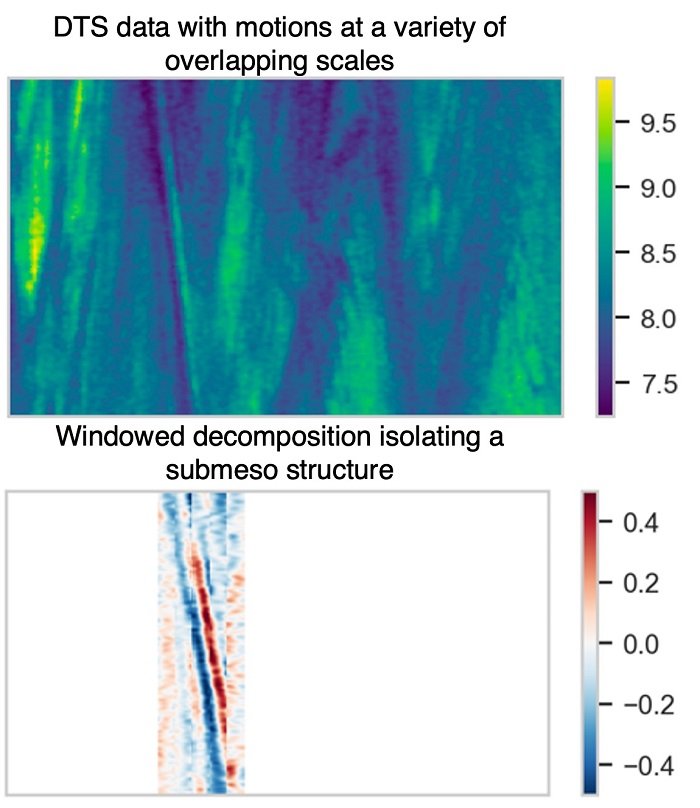Investigating submeso-scale structures of the near surface boundary layer using distributed temperature sensing

Turbulence in the atmosphere controls how things like heat and gases are transported near the surface of the earth. Normally during the day, the atmosphere is warmer near the surface and cooler above. In this case, turbulence is strong and can easily move gases and heat vertically, away from the surface since the warm air below is more buoyant than the air above it. We understand this type of turbulence fairly well. In contrast, during the night, over reflective surfaces like snow, and in the polar winter, turbulence is often not as strong. In these cases, known as stable conditions, the air near the surface is cooler and less buoyant than the air above it. As a result, during stable conditions vertical motions are often suppressed, causing turbulence to weakly mix gases and heat. This type of turbulence strongly affects a range of systems including agriculture, hydrology, weather forecasts, fog formation, and air quality.
The main issue is that turbulence during stable conditions is not well understood. During stable conditions atmospheric turbulence can suddenly strengthen and mix the atmosphere, other times no turbulent transport occurs, and sometimes it is in between. Theory does not represent these transitions. As a result, models of atmosphere (like for weather forecasts) often struggle to represent the atmosphere during stable conditions. It is suspected that well-organized flows in the atmosphere, with the technical name “submeso motions”, cause turbulence to switch between these states. However, these motions are difficult to study using typical observations and theory since they have a size between what we can observe with weather stations and what we can observe using techniques like satellites. To improve our understanding of the atmosphere we need a novel approach.
We have pioneered a completely new way of studying the motions of the atmosphere and can reveal flow patterns that could only be guessed at previously. First, we use a new technique called distributed temperature sensing (DTS), which allows us to observe the atmosphere continuously along strands of fiber optic cables hung up in the air. The main limitation is using the data from DTS since it generates thousands of observations simultaneously along each fiber optic cable. The existing ways of analyzing data are generally poorly adapted to data like these. In the second part we build a new mathematical framework that reveals these motions in an objective way in DTS data. Using these two techniques, we can identify and characterize any motions of the atmosphere, including submeso motions, which should provide a technique breakthrough for geophysical studies more generally. With these results, we will be able to directly describe arbitrary submeso motions for the first time and infer how they are generated. This knowledge should hopefully help us write the next generation of turbulence theory and improve things like weather forecasts.
Project Leader:
Karl LAPO
Funding Agencies:
FWP ESPRIT-programme
Project Duration;
17/10/2022 to 16/10/2025
